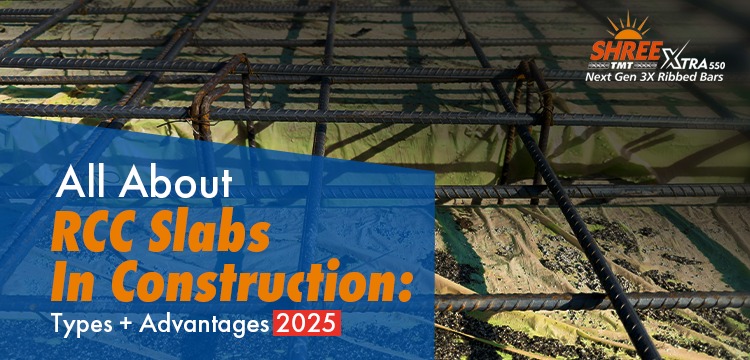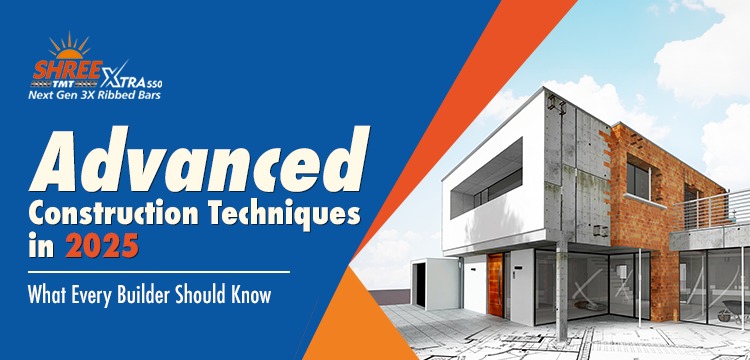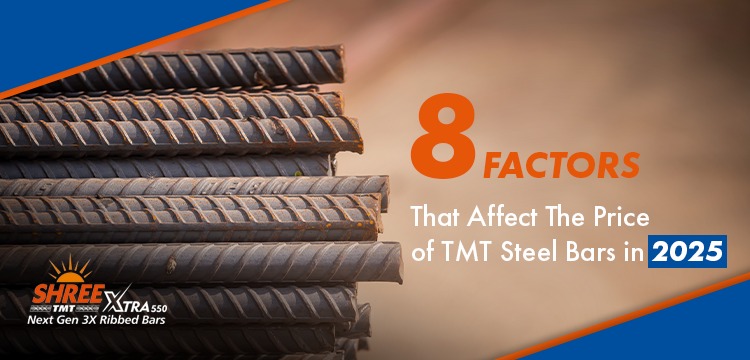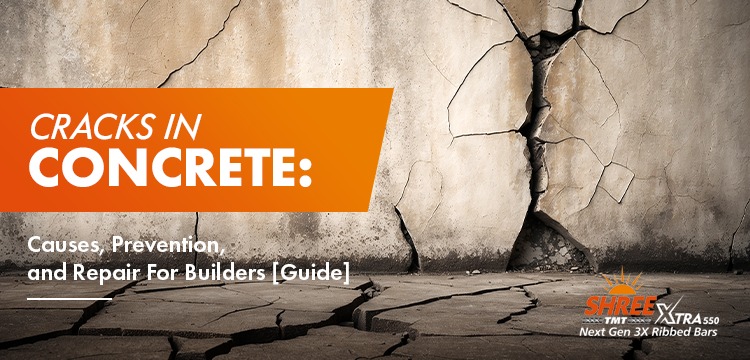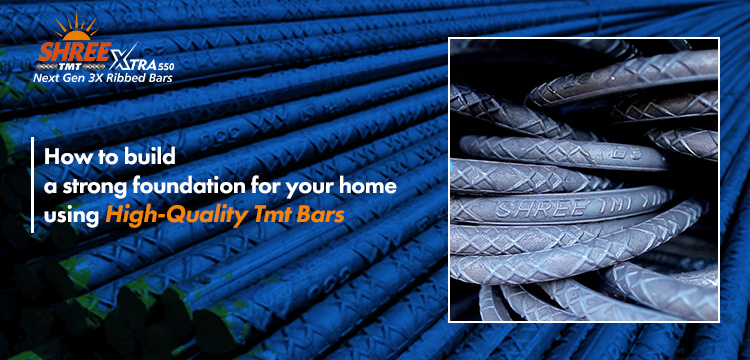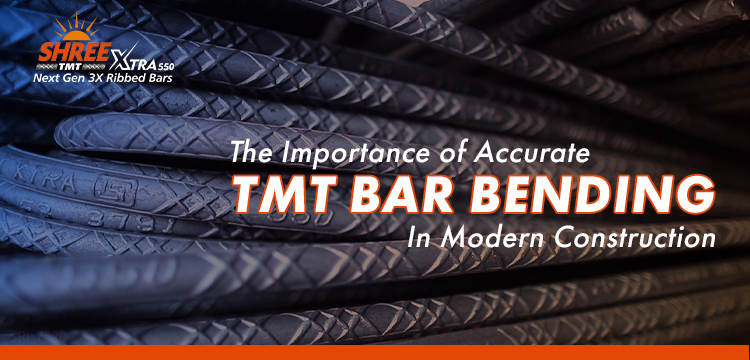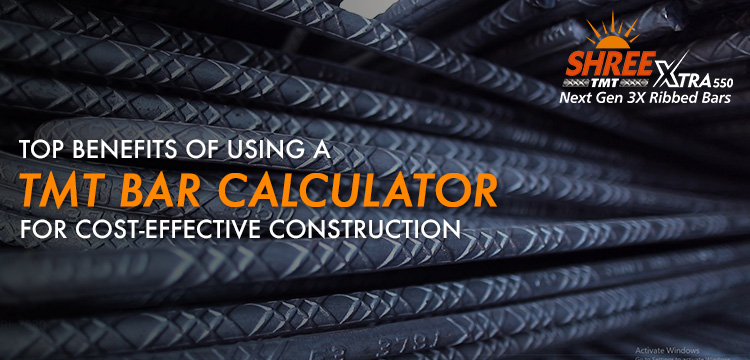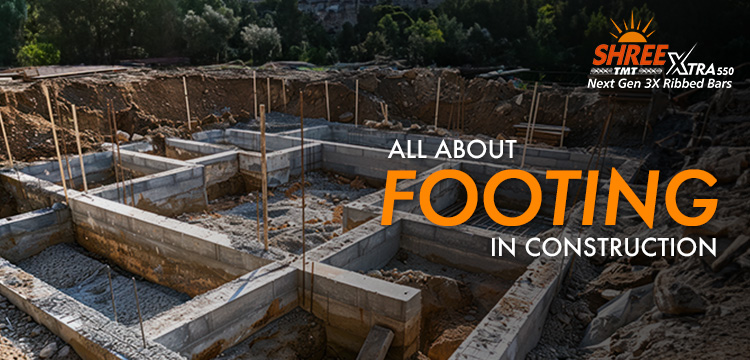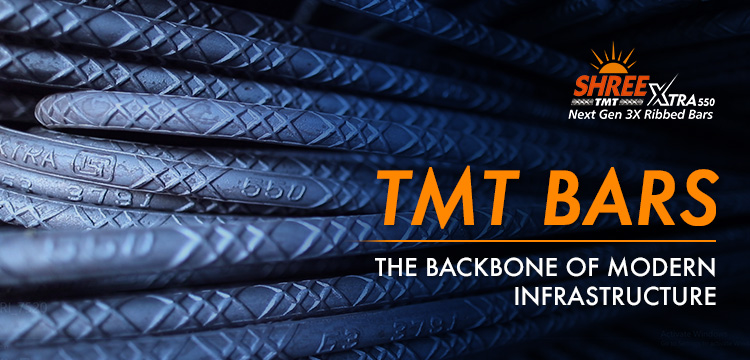All About RCC Slabs In Construction: Types + Advantages [2025]
Reinforced Cement Concrete (RCC) slabs form the backbone of modern construction, serving as essential horizontal structural elements in buildings. The combination of concrete and high-quality TMT bars creates structures that stand the test of time. Understanding the various types of RCC slabs and their advantages is crucial for engineers, architects, and construction professionals to make informed decisions in their projects.
Types of RCC Slabs
The choice of RCC slab type significantly impacts a building’s structural integrity, cost, and functionality. Each type has unique characteristics that make it suitable for specific applications.
One-Way Slabs
One-way slabs are designed to transfer loads in a single direction, typically spanning between parallel support beams or walls. These slabs are most efficient when the length-to-width ratio exceeds 2:1. Their simpler design makes them economical for smaller spans and residential construction. The TMT bars are primarily placed along the direction of the span, with minimal distribution of steel in the perpendicular direction to ensure optimal load distribution.
Two-Way Slabs
When a slab is supported on all four sides and has a length-to-width ratio of less than 2, it behaves as a two-way slab. These slabs distribute loads in both directions, making them ideal for larger spaces like office buildings and commercial structures. Two-way slabs require high-quality TMT reinforcement in both directions, resulting in better load distribution and reduced deflection.
Flat Slabs
Flat slabs are unique in that they directly rest on columns without intermediate beams. This modern design creates clean ceiling lines and maximizes headroom, making them popular in contemporary architecture. Column capitals or drop panels may be used to enhance shear resistance. The strategic placement of TMT bars in flat slabs is crucial for maintaining structural integrity and preventing punching shear failure.
Waffle Slabs
Also known as coffered slabs, waffle slabs feature a grid of recessed panels, creating a distinctive waffle-like pattern on the ceiling. This design reduces dead weight while maintaining structural depth, enabling longer spans with less material. The complex reinforcement pattern in waffle slabs demands high-quality TMT bars to ensure proper load distribution and structural stability.
Advantages of RCC Slabs
Superior Durability
RCC slabs exhibit exceptional durability, with lifespans often exceeding 50 years under proper maintenance. The synergy between concrete and Shree TMT bars creates a robust structure resistant to weathering, impact, and normal wear and tear. This durability translates to reduced maintenance costs over the building’s lifetime.
Cost-Effectiveness
Despite initial material costs, RCC slabs prove economical in the long run. Their durability minimizes replacement needs, while their versatility reduces labor costs during construction. Using high-quality TMT bars from trusted manufacturers like Shree TMT ensures long-term cost savings by preventing structural issues.
Fire Resistance
RCC slabs provide excellent fire protection, with concrete acting as an effective thermal barrier. The concrete cover protects TMT reinforcement from high temperatures, maintaining structural integrity during fire events. This inherent fire resistance often reduces the need for additional fireproofing measures.
Design Flexibility
The versatility of RCC slabs allows architects and engineers to achieve various design objectives. The adaptability of TMT bars enables complex designs while maintaining structural integrity. This flexibility extends to both aesthetic and functional requirements of modern buildings.
Environmental Performance
RCC slabs contribute to building sustainability through thermal mass properties, helping regulate indoor temperatures and reduce energy consumption. The materials used are typically locally sourced, and the durability of quality TMT bars ensures a longer life cycle for the structure.
The Critical Role of TMT Bars in RCC Slabs
The strength and durability of RCC slabs heavily depend on the quality of TMT bars used in their construction. TMT (Thermo-Mechanically Treated) bars act as the backbone of RCC structures, providing:
- High tensile strength for better load-bearing capacity
- Superior ductility for earthquake resistance
- Excellent bond strength with concrete
- Uniform strength distribution throughout the structure
Conclusion
Reinforced Cement Concrete (RCC) slabs remain a fundamental element in contemporary construction, offering a perfect balance of structural performance, cost-effectiveness, and design flexibility. The quality of TMT bars used in RCC slabs plays a crucial role in ensuring structural integrity and longevity. Shree TMT, as a leading manufacturer of high-quality TMT bars, provides the essential reinforcement needed for durable and reliable RCC construction. For projects requiring superior structural integrity and long-term durability, choosing Shree TMT bars ensures that your RCC slabs will stand strong for generations to come.

